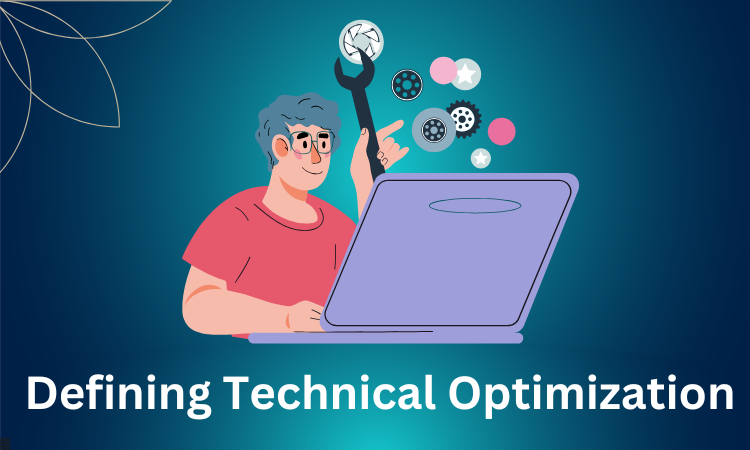In web development, a successful website isn’t just about looks; it must also be fast, secure, and user-friendly.
Technical optimization focuses on improving behind-the-scenes elements like code, performance, and infrastructure to enhance functionality.
Whether aiming for higher search rankings, faster loading speeds, or better accessibility, technical optimization is the key to building a website that stands out and delivers lasting results.
Role of technical optimization in web development
Technical optimization improves website efficiency and security. It enhances performance and creates a user-friendly experience. It supports success in a competitive online environment.
Defining Technical Optimization
Technical optimization in web development refers to improving a website’s technical aspects to enhance performance and functionality.
It focuses on backend and frontend elements such as optimizing code, speeding up load times, ensuring mobile responsiveness, and improving security.
This process also involves making the website search engine-friendly by following best practices like structured data and clean URLs.
The goal is to create a fast, secure, and easy-to-navigate site, offering a better user experience and higher visibility in search engines.
Key Areas of Technical Optimization
A technically optimized website is essential for effective strategies, offering key points such as:
Performance Optimization
Performance optimization focuses on making a website load faster and run smoothly. This includes reducing page load times, compressing images, minimizing code size, and using caching to store data for quicker access.
These efforts improve user experience, reduce bounce rates, and ensure the website performs well on all devices.
Search Engine Optimization (SEO)
Search Engine Optimization (SEO) increases a website’s visibility in search engine results. It involves optimizing meta tags, using keywords, improving mobile-friendliness, and adding structured data.
Technical SEO also includes faster load times and secure HTTPS connections. These steps help search engines rank the site higher, making it easier for users to find.
Code Quality
Code quality ensures a website’s code is clean, efficient, and easy to maintain. It involves removing unnecessary code, using best practices and organizing the code logically.
High-quality code improves website speed, reduces errors and makes future updates easier. It also enhances security and ensures better compatibility across devices and browsers.
Website Security
Website security protects a site from threats like hacking and data breaches. It includes using HTTPS, updating software regularly and preventing vulnerabilities like SQL injection and cross-site scripting (XSS).
Strong security measures safeguard user data, build trust, and ensure the website runs smoothly without disruptions or risks.
Cross-Browser and Device Compatibility
Cross-browser and device compatibility ensures a website works properly on all browsers and devices, including desktops, tablets, and smartphones.
This involves testing the site on different platforms, using website responsive design, and adding fallbacks for unsupported features. Compatibility makes the website accessible to more users, improving their overall experience.
Accessibility
Accessibility ensures everyone, including people with disabilities can use a website. This includes adding alt text to images, using proper color contrast and supporting keyboard navigation.
Following accessibility guidelines like WCAG makes the site user-friendly for all, improving inclusivity and ensuring compliance with legal and ethical standards.
Tools and Technologies for Technical Optimization
Effective tools and technologies for technical optimization help improve website performance, security, and user experience through automation, analysis, and streamlined processes.
Content optimization tools:
help improve website performance by compressing images, reducing file size, and optimizing text for readability.
Tools like TinyPNG, ImageOptim, and Grammarly ensure content loads quickly and engages users effectively.
These tools make websites faster, more appealing, and easier for search engines to understand and rank.
Monitoring performance tools:
Like Google Lighthouse, GTmetrix, and New Relic analyze website speed, responsiveness, and overall performance.
These tools provide insights to identify issues and optimize the site for faster load times and a better user experience.
Testing automation tools:
like Selenium, Cypress, and TestCafe help check a website’s functionality across different browsers and devices.
They save time by automating repetitive tests, ensuring the website works correctly, and improving reliability before deployment.
Database optimization strategies:
Involve improving the speed and efficiency of data storage. Techniques like indexing, query optimization, and caching reduce server load and improve website performance, ensuring faster access to data and a smoother user experience.
Challenges in Technical Optimization
Technical optimization can be challenging due to various factors. Limited time or resources might prevent thorough optimization efforts, especially in small teams or under tight deadlines.
Legacy code or outdated systems can make it difficult to implement new optimization techniques.
Additionally, balancing optimization with design and functionality can be tricky, as some optimizations may interfere with the website’s look or features.
Keeping up with rapid changes in technology and best practices also requires continuous learning and adaptation, which can be overwhelming for developers. These challenges need careful planning and prioritization to overcome.
Benefits of Technical Optimization
Technical optimization plays a crucial role in your website’s success, offering key benefits such as:
Improved user experience:
Technical optimization makes websites faster, more reliable, and easier to use. Quick loading times, smooth navigation, and mobile-friendly designs keep users engaged and satisfied.
A better user experience reduces frustration, increases trust, and encourages visitors to stay longer and return more often.
Higher search rankings:
Technical optimization improves search engine visibility by enhancing website speed, mobile-friendliness, and security.
Features like structured data and clean URLs help search engines understand the site better. These efforts result in a higher ranking, making it easier for users to find the website.
Cost savings:
Technical optimization helps reduce costs by improving website efficiency. Faster-loading pages use less server bandwidth, saving hosting expenses.
Optimized code and databases reduce maintenance efforts, lowering development and support costs.
Caching and content delivery networks (CDNs) minimize resource usage and enhance performance.
Additionally, a well-optimized site reduces bounce rates and improves user retention, maximizing the return on investment UX design ROI.
Competitive edge:
A technically optimized website is faster, more secure, and user-friendly, giving it an advantage over competitors.
Better performance and higher search rankings attract more visitors. A seamless user experience builds trust and keeps users engaged, helping businesses stand out in a crowded online market.
Sustainability:
Technical optimization supports sustainability by reducing a website’s energy consumption. Efficient code, faster load times, and optimized resources lower the demand on the server, saving energy.
This eco-friendly approach benefits the environment while improving performance, making websites user-friendly and sustainable for long-term use.
Trends and Future of Technical Optimization
The future of technical optimization focuses on speed, security, and sustainability. Trends include serverless architecture and edge computing, which deliver content faster by processing data closer to users.
AI-driven tools are becoming popular for monitoring performance and automating fixes. Sustainability is also a priority, with developers optimizing code and using energy-efficient hosting to reduce carbon footprints. IT solutions in the UAE are also embracing these trends to improve website performance and user experience.
Advancements in progressive web apps (PWAs) and accessibility standards ensure websites reach more users.
As technology evolves, staying updated on these trends is essential to create faster, safer, and greener websites.
Best Practices for Implementation
Implementing technical optimization requires a structured approach. Start with regular performance audits to identify and fix issues such as slow loading times or security vulnerabilities.
Integrate optimization into the development process by using tools like version control and automated testing.
Focus on writing clean, efficient code and removing unnecessary elements. Ensure the website is mobile-friendly and follows accessibility standards.
Use CDNs, caching, and image compression to improve speed. Regularly update software, plugins, and frameworks to ensure optimal performance and security.
Educate your team on new technologies and best practices to maintain ongoing optimization efforts.
Brandout Can Help You Optimize Your Website’s Technical Performance for Better Results
Website performance plays a huge role in user experience.
Brandout’s web development service focuses on improving speed, security, and overall functionality.
We address technical issues to make sure your website works smoothly, helping you improve both your search engine rankings and user experience.
Conclusion:
Technical optimization is a vital aspect of web development that ensures websites run efficiently and securely and provide a seamless user experience.
Focusing on performance, security, and search engine visibility allows developers to create websites that meet user expectations and stand out in a competitive digital marketing landscape.
Embracing the latest tools, best practices, and trends will help ensure long-term success, making technical optimization an ongoing and essential part of website management.
Frequently Asked Questions:
What is optimization in web development?
Optimization in web development refers to improving various technical aspects of a website to ensure it runs faster, is more efficient, and provides a better user experience.
This includes optimizing performance, security, mobile responsiveness, code quality, and SEO to enhance functionality and site performance.
What is the difference between SEO and optimization?
SEO (Search Engine Optimization) focuses on improving a website’s visibility in search engine results by enhancing elements like content, keywords, and backlinks.
On the other hand, optimization is broader, addressing site performance, security, code efficiency, and user experience, both of which impact SEO.
How to do technical SEO?
To perform technical SEO, ensure that your website has fast loading times, mobile-friendliness, proper URL structures, secure HTTPS connections, and optimized images.
Use XML sitemaps, and structured data (schema markup), and improve crawlability by fixing broken links and optimizing robots.txt files. Regularly audit site health using tools like Google Search Console.
What is an example of technical optimization?
An example of technical optimization is reducing image file sizes without losing quality. This can be achieved using tools like TinyPNG or image compression techniques.
Optimized images improve page load times and enhance website performance, contributing to a better user experience and improved SEO rankings.








